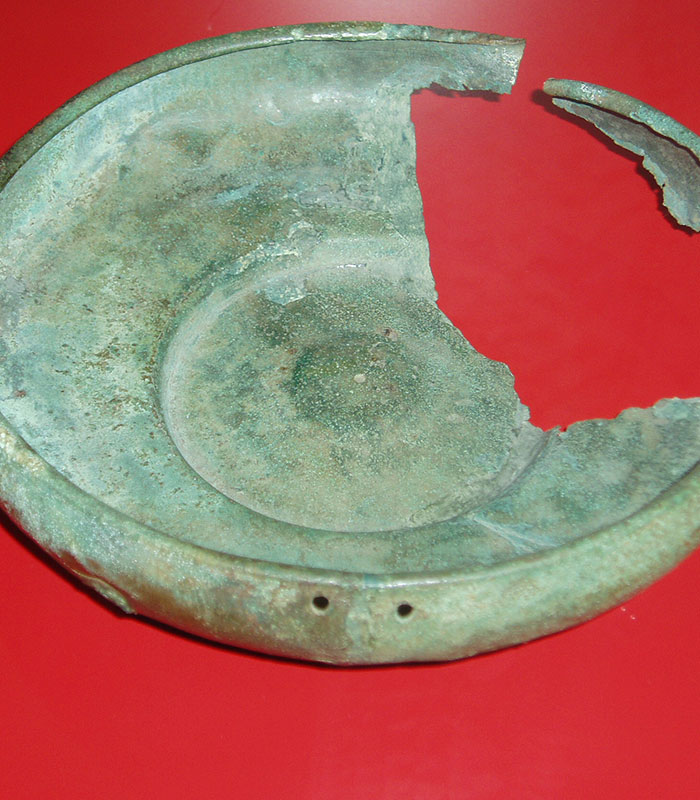In April 1961 the goatherd Domingo Sánchez of fourteen years of age was passing with his flock through the estate of Los Machos, about three kilometres from Berzocana. In the distance he made out something shining on the hillside debris of the sierra near the so-called Castro de El Terrero. It was a metallic vessel containing two necklaces of solid gold (three according to some accounts). He had just discovered what would be known as the Treasure of Berzocana. The young goatherd was unaware of how his find would contribute to the annals of the history of the Iberian Peninsula as one of the most emblematic and important archaeological records of the Bronze Age in Extremadura.
The ensemble consists of two decorated torcs (necklaces in the form of a circular horseshoe) of 24-carat solid gold and the patera (shallow vessel) of bronze which appears to have contained them. The maximum diameter of the torcs is 15 centimetres and they weigh 951 grams. Their circular section is thicker in the centre than on the edges and they have rivets in the form of buttons. They are decorated with geometrical motifs made with a burin on their central third and in the areas near to both rivets. There is sufficient evidence to suppose that there was a smaller third torque, which was sold clandestinely to a silversmith in Navalmoral de la Mata and ended up as rings, items of jewellery, and dental prostheses.
After it was found the ensemble was handed over to the Justices’ Court of the nearby village of Navezuelas and subsequently passed to the Provincial Archaeological Museum of Cáceres. In 1964 it was transferred to the National Archaeological Museum where it is currently exhibited. Its dating has undergone several modifications. Initially the objects were considered to be part of the ‘Lusitanian gold articles’ of the late Bronze Age/Iron Age and of the Mediterranean sphere of influence, albeit related to the Atlantic metal-bearing basins, and dated as being of the 7th to 6th centuries B.C.

